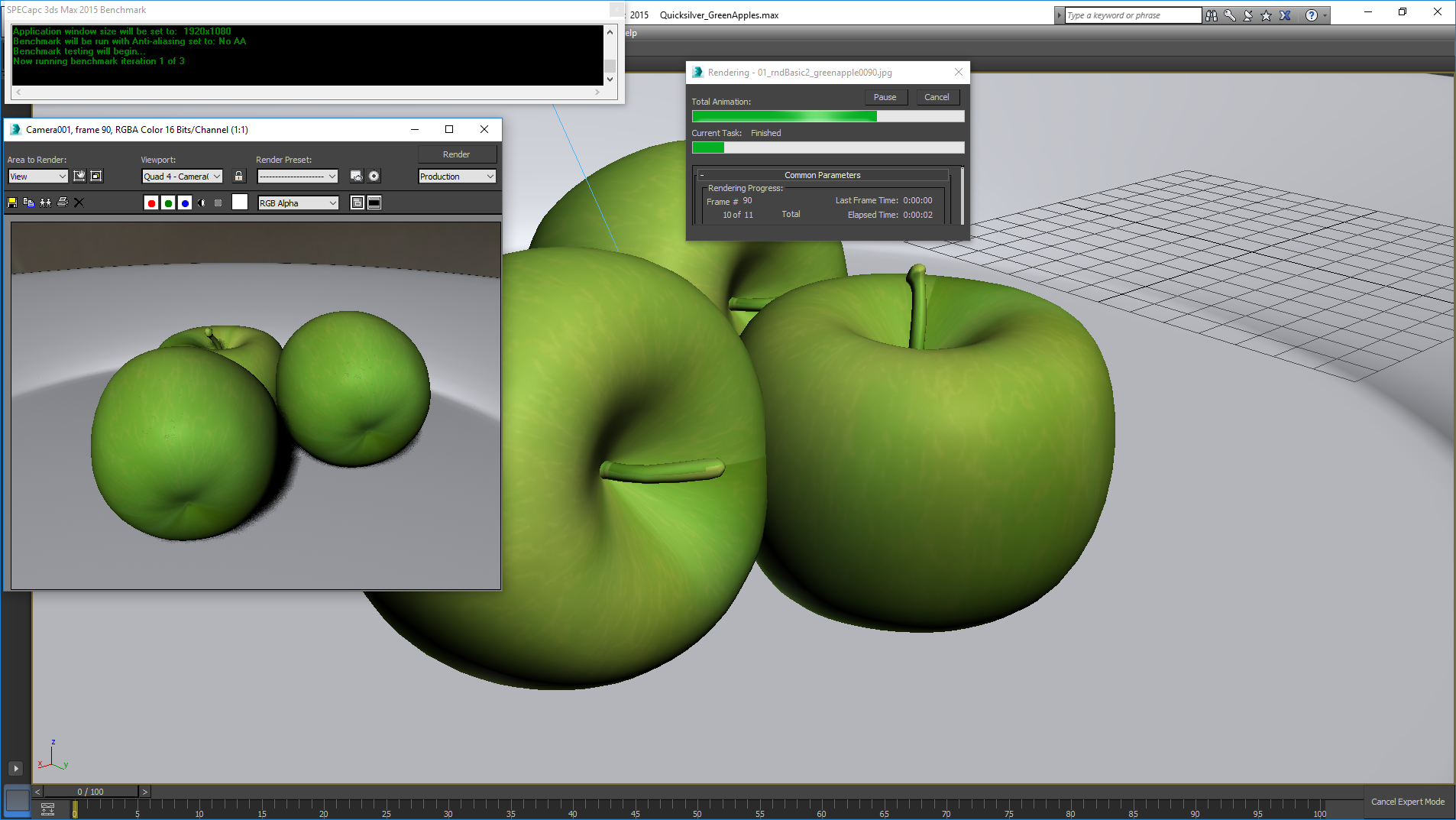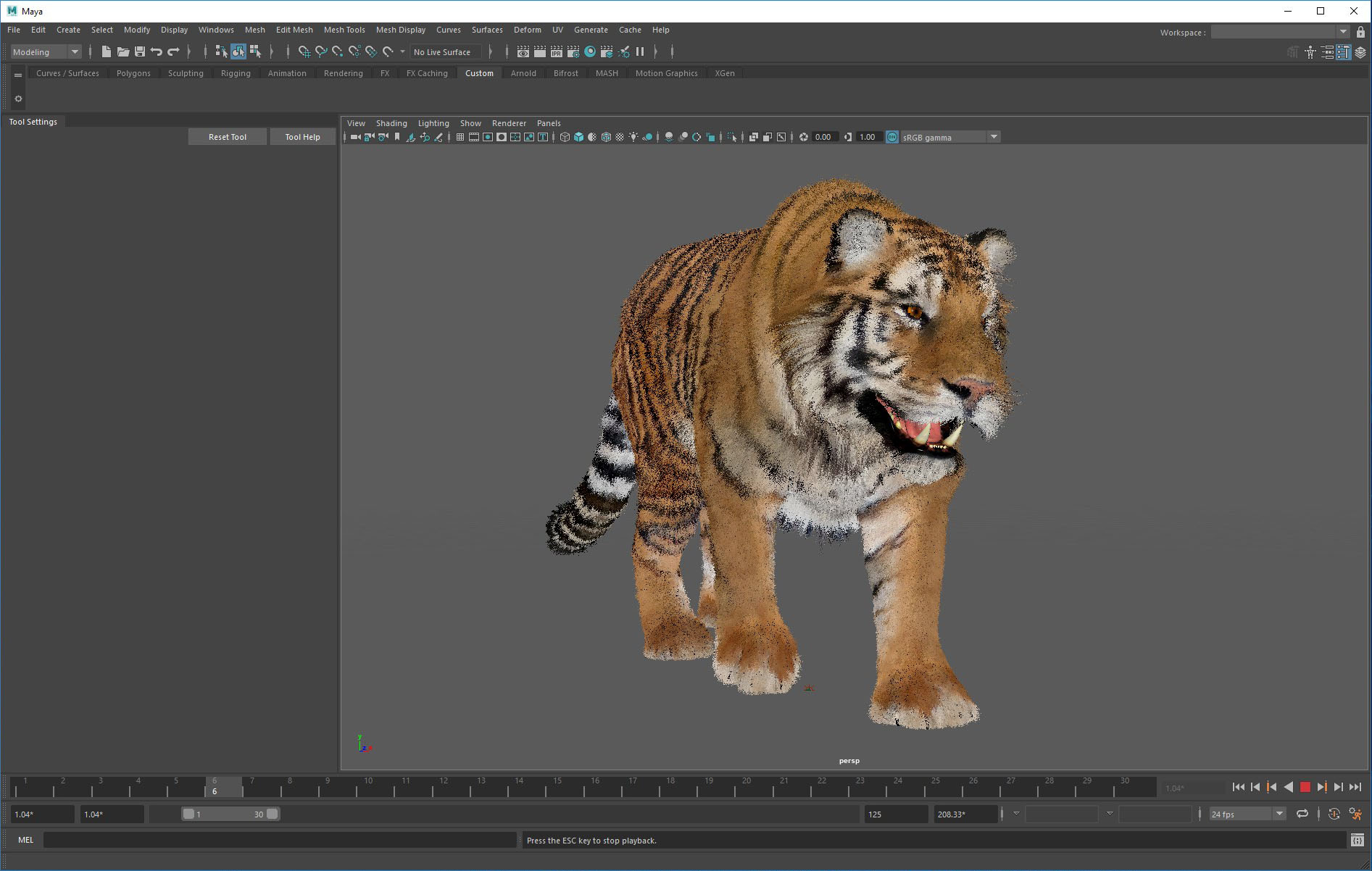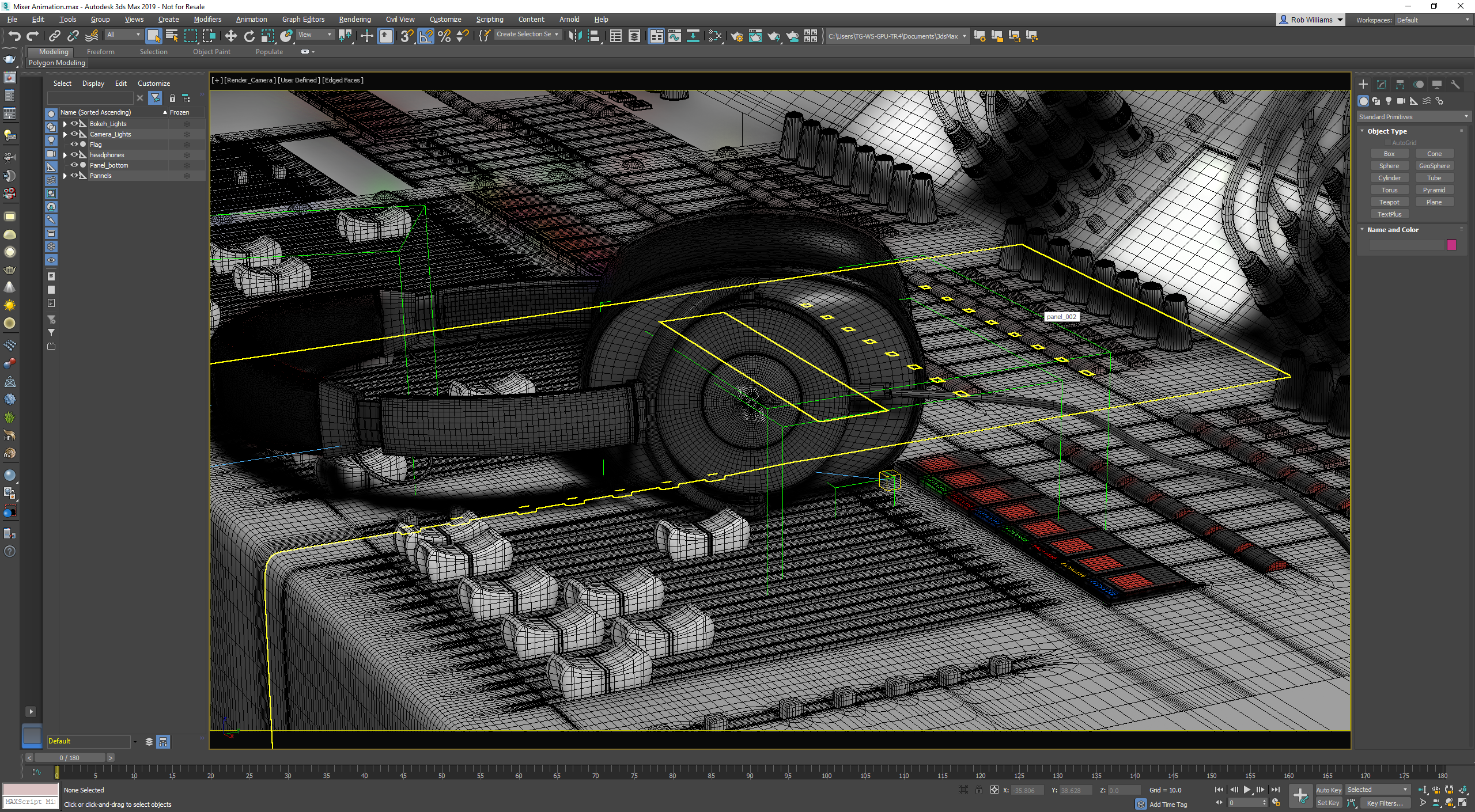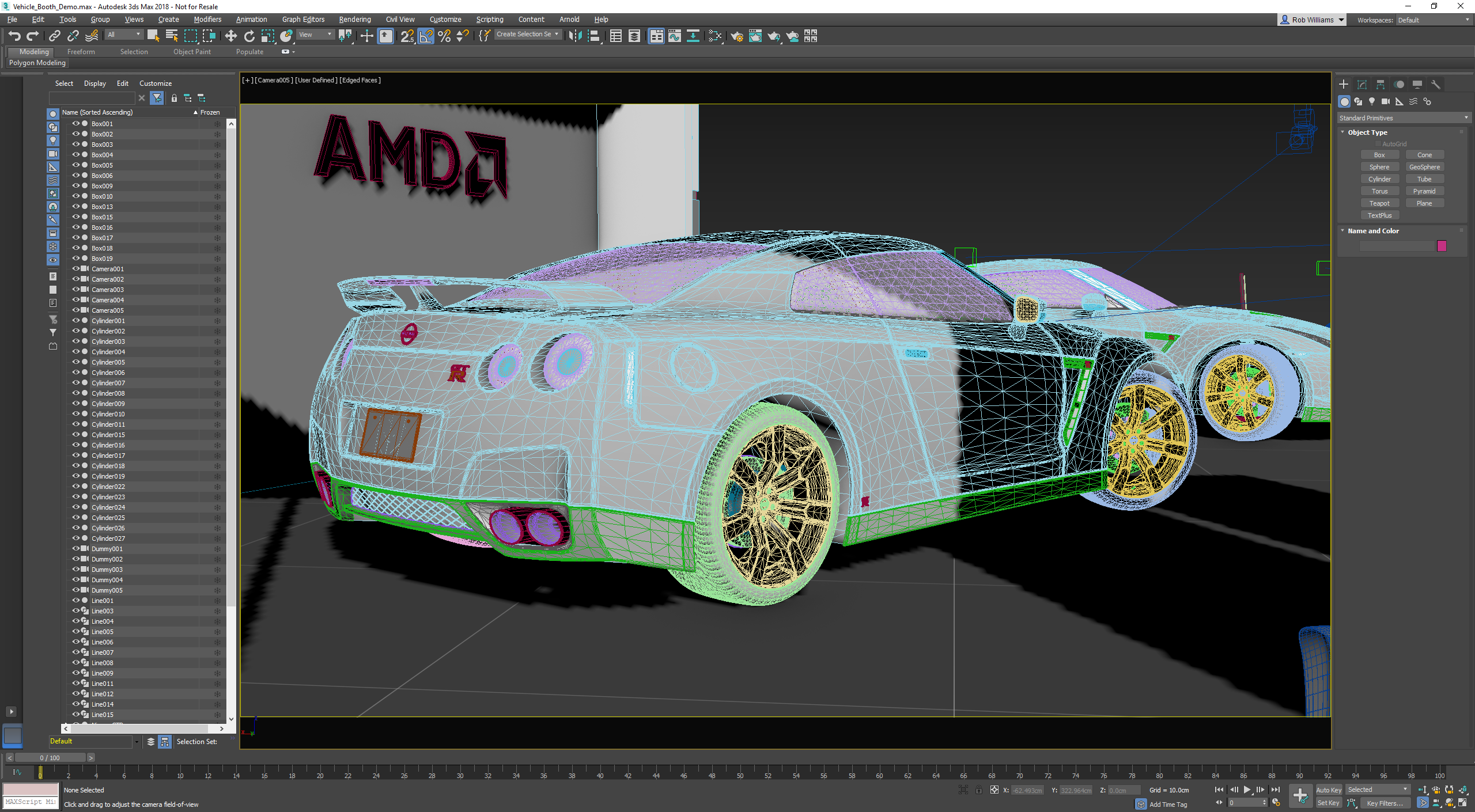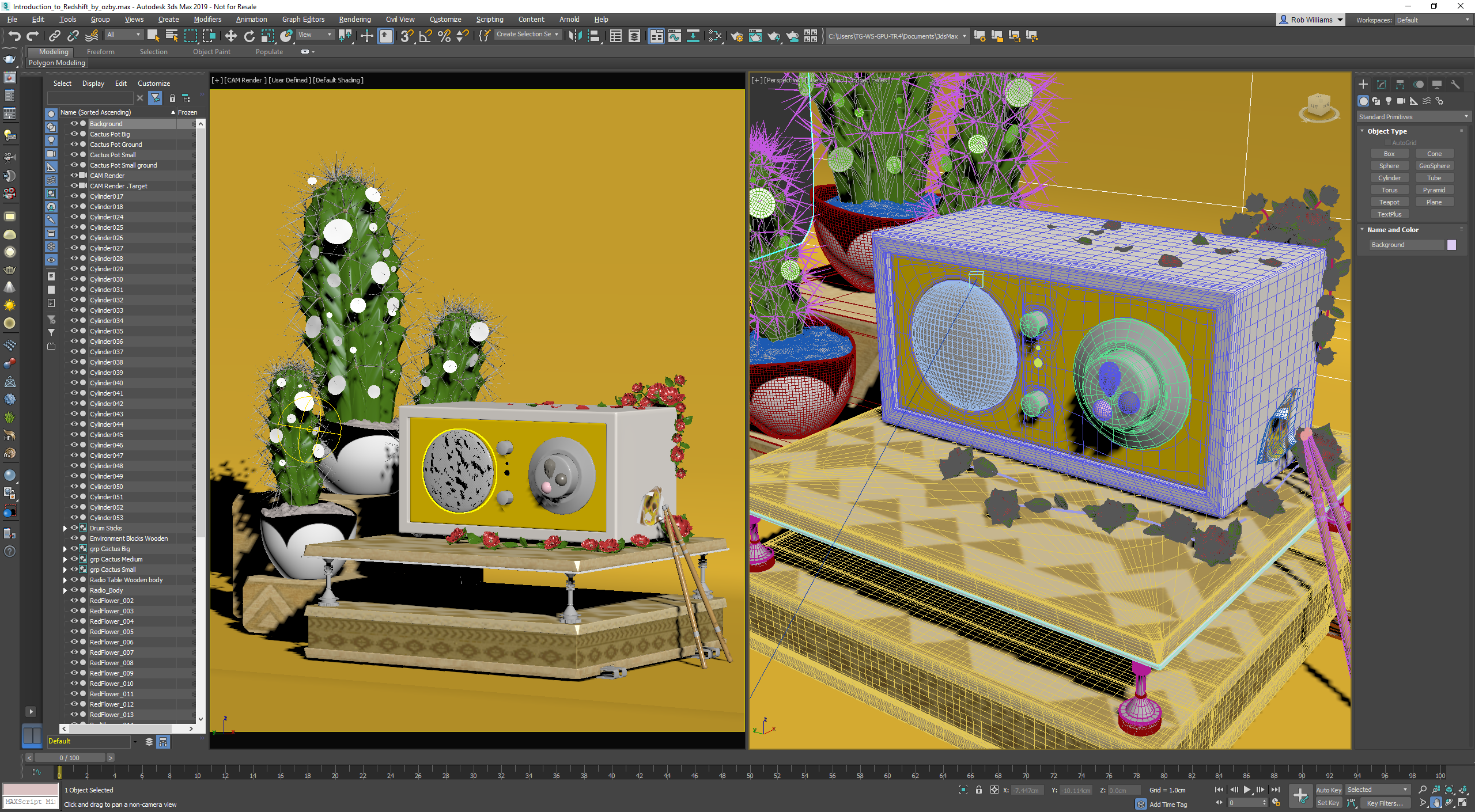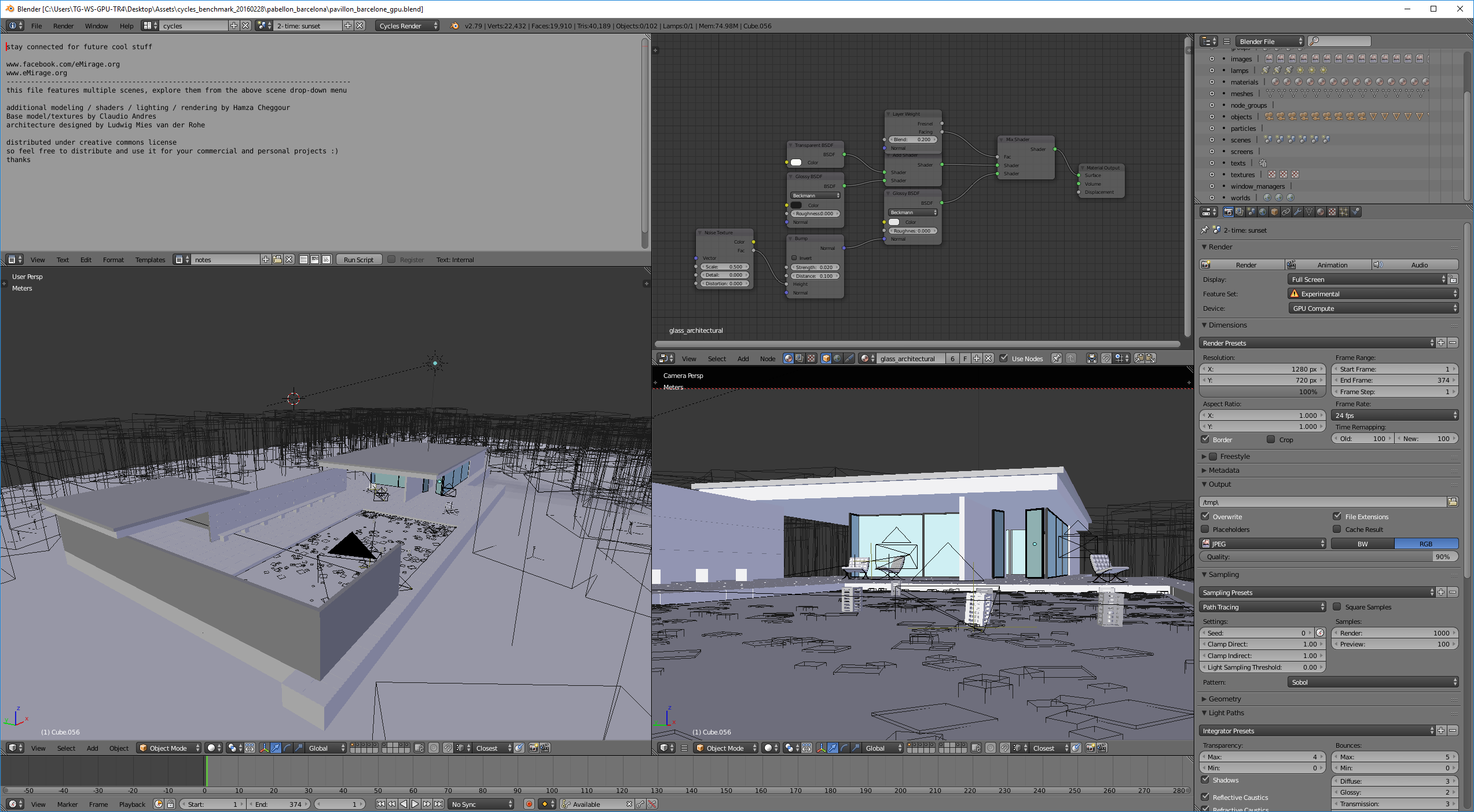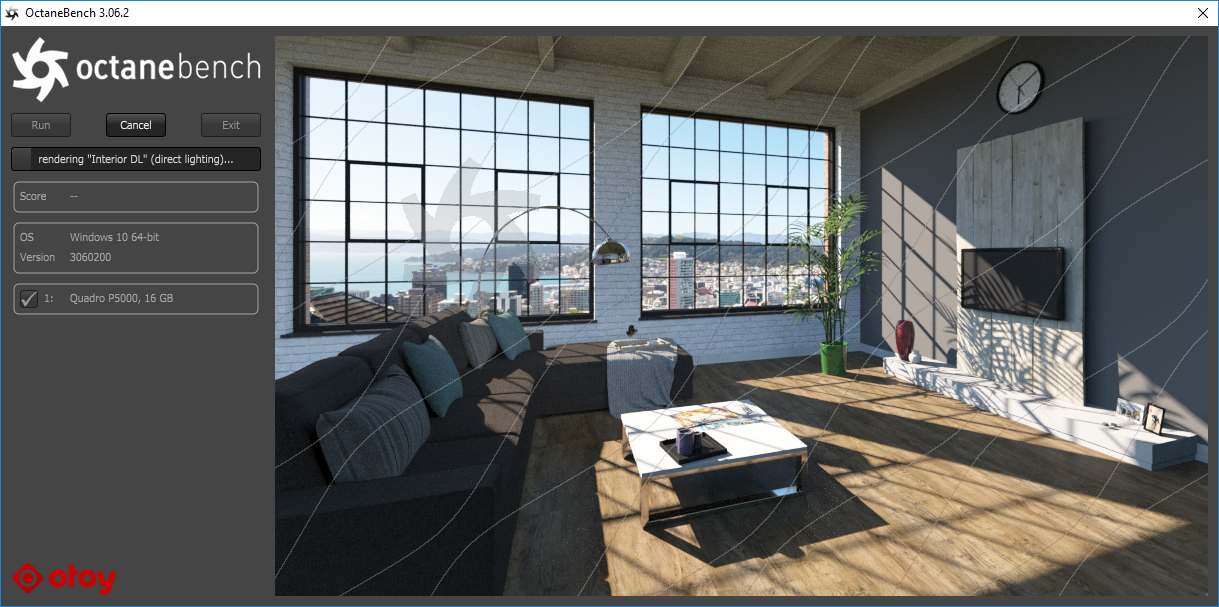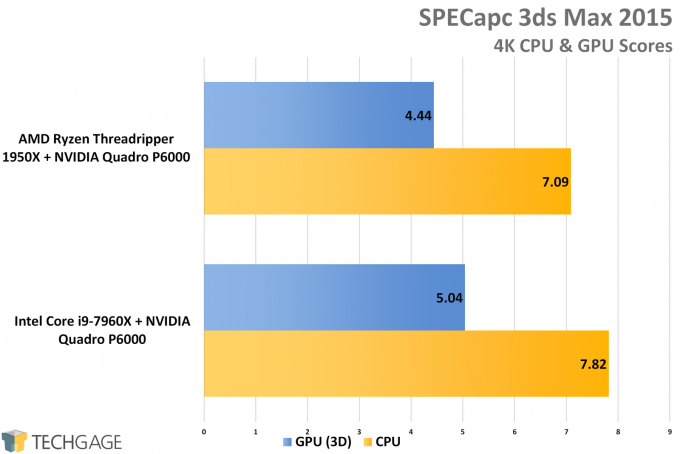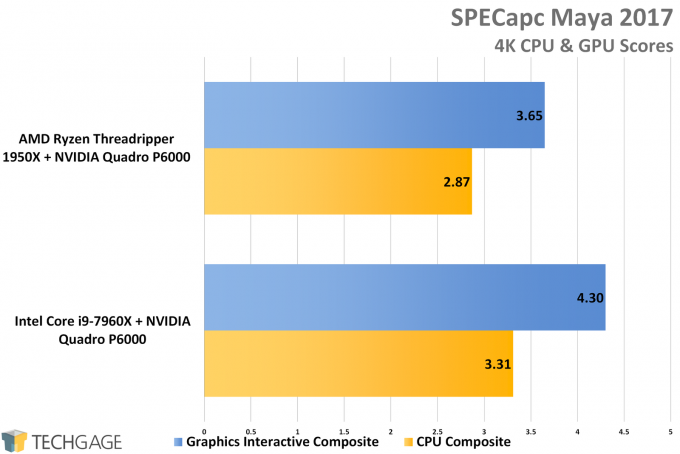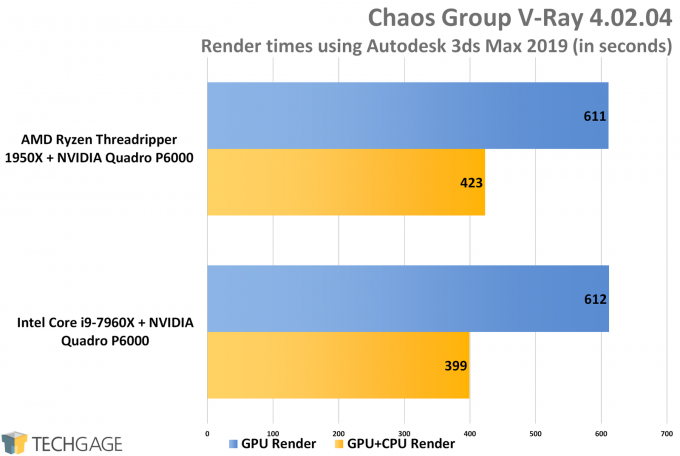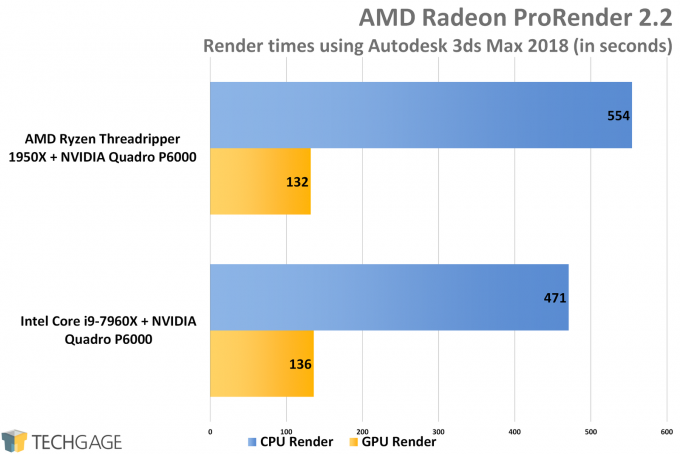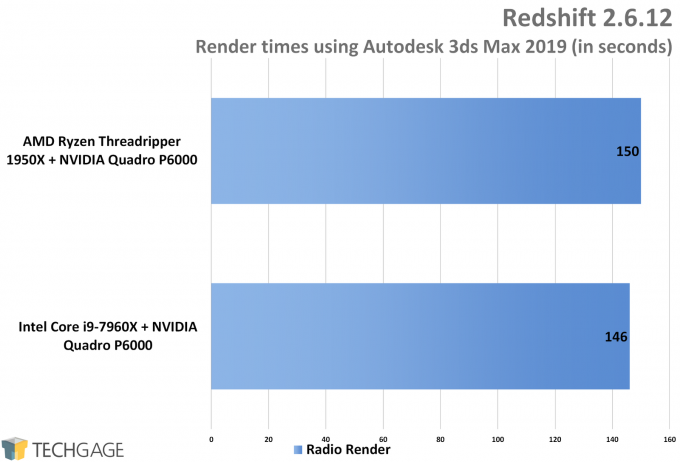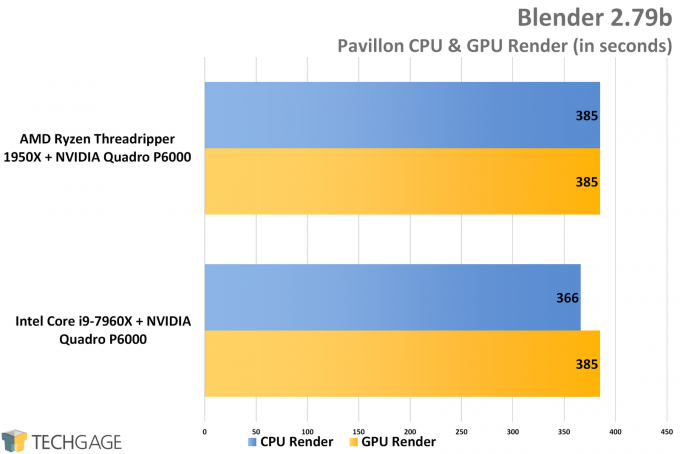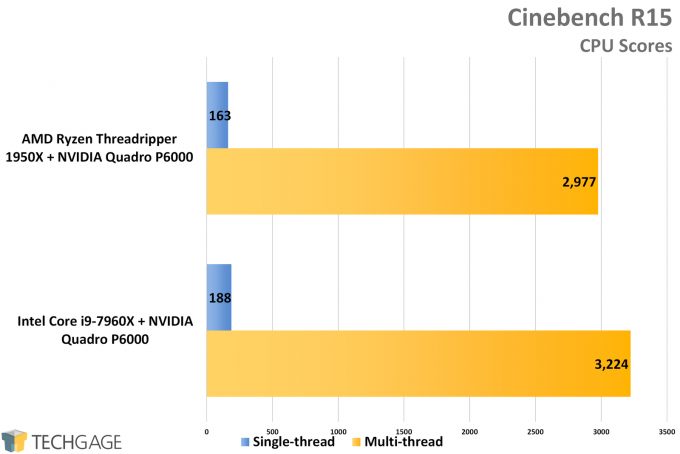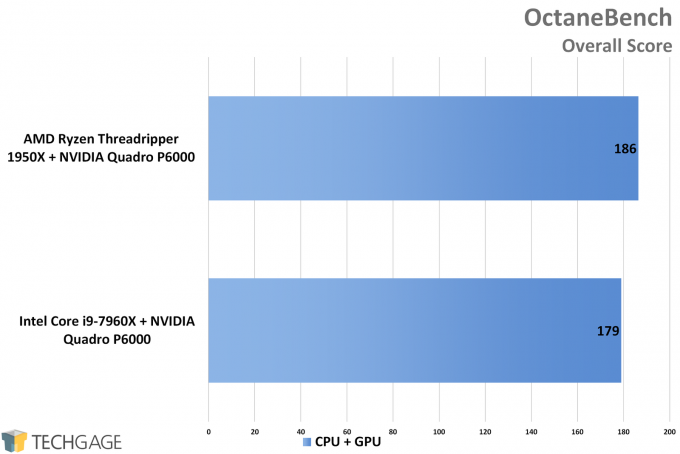- Qualcomm Launches Snapdragon 4 Gen 2 Mobile Platform
- AMD Launches Ryzen PRO 7000 Series Mobile & Desktop Platform
- Intel Launches Sleek Single-Slot Arc Pro A60 Workstation Graphics Card
- NVIDIA Announces Latest Ada Lovelace Additions: GeForce RTX 4060 Ti & RTX 4060
- Maxon Redshift With AMD Radeon GPU Rendering Support Now Available
Battle of the Workstations: AMD Ryzen Threadripper vs Intel Core X-Series
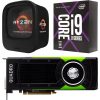
The workstation PC market got a shot in the arm last fall when AMD launched its Ryzen Threadripper platform, offering a 16-core CPU for a reasonable price. That led many to ponder what should be in their next machine. Join us as we pit comparable AMD and Intel machines against each other in over twenty workstation scenarios.
Page 2 – AMD vs Intel Workstation: Rendering Performance
On the previous page, we took a look at AMD vs. Intel performance across nine viewport benchmarks, and ultimately, we saw some strengths that made it quite clear which side was better for a particular design suite. For largely GPU-targeted workloads, some results were a little surprising, and I have a gut feeling more surprises are yet to come.
On this page, we’re going to take a look at workstation performance across eight rendering applications, two of which were featured in some form on the previous page. Following that, we’ll dive into encoding, Linux, and finish off with a quick taste of gaming.
Rendering Applications
Rendering is a process that can be greatly accelerated when you’re using the correct hardware, something that’s true whether we’re talking about the CPU, or the GPU. On the previous page, the viewport performance seen was largely GPU-targeted, but many of these renderers will target one or the other – CPU or GPU. In some cases, such as with V-Ray and ProRender, a CPU+GPU test is tossed in for a more thorough look.
While the 3ds Max and Maya results on the previous page revolved entirely around viewport performance, SPEC’s full-blown SPECapc suites test a lot more – including viewport performance, but also rendering. The score delivered here is a safe “overall” performance gauge.
In the previous tests, AMD performed extremely well against Intel, but in this more thorough overall look, some clear differentiation can be seen. This is likely to be the result of improved rendering performance on Intel’s CPUs. As we saw with AutoCAD on the previous page, AMD’s side suffers degraded GPU performance, even though the same GPU was used. A bit strange, and unfortunate.
On the V-Ray front, straight GPU rendering executes the same on either AMD’s or Intel’s platform. That’s the kind of result seen from a render that ignores the CPU entirely; if we introduce the CPU, combining its efforts with that GPU, then some actual scaling can be seen. In that event, Intel’s stronger IPC puts it ahead of AMD. And speaking of AMD:
Since ProRender can support both CPU and GPU rendering, it seemed sensible to test both for this article, just as some others have been tested (eg: Blender, which is coming up). Here, the results are largely expected, outside of the fact that Intel consistently fell a few seconds short of AMD in the GPU test. On the CPU render front, Intel sits very comfortably at the top of the performance pile.
Redshift uses very little CPU to do any of its rendering; whatever’s used is going to be it setting up its GPU rendering processes, and once that’s done, the end result between platforms is very similar.
When we have some 20+ graphs to talk about, it’s nice to have a humorous result once in a while. What you see here is no typo: the AMD rig rendered the Blender project in the same amount of time whether it was the CPU or GPU being used. I did an immediate retest on each, keeping HWINFO open this time, and hit 6m 25s again on the CPU and 6m 27s on the GPU (drat, just couldn’t be perfect).
That distraction aside, over on the Intel side, its increased IPC once again helps push itself ahead of AMD. A Linux look at Blender might just pop up on the following page.
I’ll preface the Cinebench result to say that I’m not sure of its overall worthiness, but for a straight CPU test, it seems suitable enough. This stand-alone benchmark is based on Cinebench Release 15, whereas the four generations newer R19 version of the suite has been available for nearly a year at this point. Nonetheless, this benchmark acts as a suitable benchmark if you want to compare CPU rendering performance on your system to ours.
Wrapping things up in this category is OctaneBench, giving a rather favorable nod to AMD. Not to beat a dead horse, but this scaling is in fact accurate, even though the delta is kind of large. I don’t like having to re-set up test PCs for a sanity check – especially when it involves swapping the DRAM and GPU. Nonetheless, it had to be done, and was in fact done – to confirm this original performance scaling. #JustBenchmarkingThings
What’s this ultimately mean? Contrary to popular belief, core-for-core, AMD can in fact deliver enough of its own optimizations to negate the IPC boost on the Intel competition – sometimes.
Support our efforts! With ad revenue at an all-time low for written websites, we're relying more than ever on reader support to help us continue putting so much effort into this type of content. You can support us by becoming a Patron, or by using our Amazon shopping affiliate links listed through our articles. Thanks for your support!




